These days, residents of the coastal village of Nhon Hoi (An Hoa Hai, Tuy An, Phu Yen) are busy with the anchovy steaming season. Each time a boat docks, locals rush to unload the catch and bring it to the steaming facilities.
After a night of offshore fishing, the break of dawn marks the return of boats loaded with anchovies to Nhon Hoi village.
Baskets of fresh anchovies are hauled ashore - some sold to traders for making fish sauce, while the majority are purchased by processing facilities for export as dried anchovies.
Depending on the type and quality, prices vary. Ba Lai anchovies, more commonly found, sell for around USD 0.60 to 0.80 per kilogram, while the rarer Ngan anchovies fetch up to USD 3.20 to 4.00 per kilogram.
Fresh anchovies are carefully prepared, washed in diluted saltwater, and sorted to remove substandard fish. This stage must be done swiftly to preserve the natural freshness and flavor.
The cleaned anchovies are then spread on bamboo trays and placed in steamers. Each steaming batch includes 15 to 20 trays. This step requires precision and focus.
Operators must monitor both fire and water levels. Uneven heat or insufficient water can compromise the quality of the steamed fish.
After steaming for about 5 to 10 minutes at over 60°C (140°F), the anchovies release a rich aroma. Workers then transfer them to drying racks.
The beach in front of Nhon Hoi village, facing Hon Yen, becomes a sea of bamboo frames covered with steaming-hot anchovies. Women take turns under the scorching sun to flip the fish, ensuring even drying.
From morning to dusk, workers remain constantly busy washing and steaming. If the weather is favorable, the anchovies dry within a day. In cloudy conditions, drying can take two or three days.
For Ngan anchovies, workers must sort fish according to traders’ specifications - removing mixed species and keeping only whole, beautiful fish.
“A processed basket of anchovies earns me about USD 0.50. On busy days, I process hundreds of baskets. Other days, maybe just 10. It’s tiring but joyful work. I save a little every day to support my family and my children’s education,” said Phan Thi My Thi.
At Dinh Huong’s steaming workshop in Nhon Hoi, about ten local women are employed.
Whenever anchovies arrive, her steamer - like many others - operates at full capacity to meet market demand. “Even during off-seasons with smaller catches, we keep the steamer running to maintain jobs and support the women in our village,” Huong shared.
On average, each workshop in Nhon Hoi can steam 2 to 4 tons of fresh anchovies daily. After drying, the yield is nearly 2 tons of dried anchovies, which sell for about USD 2.40 to 3.60 per kilogram, depending on quality.
Dried anchovies attract traders who come to buy them directly. This local delicacy is not only popular domestically but is also exported to international markets including the United States, China, South Korea, and Japan.
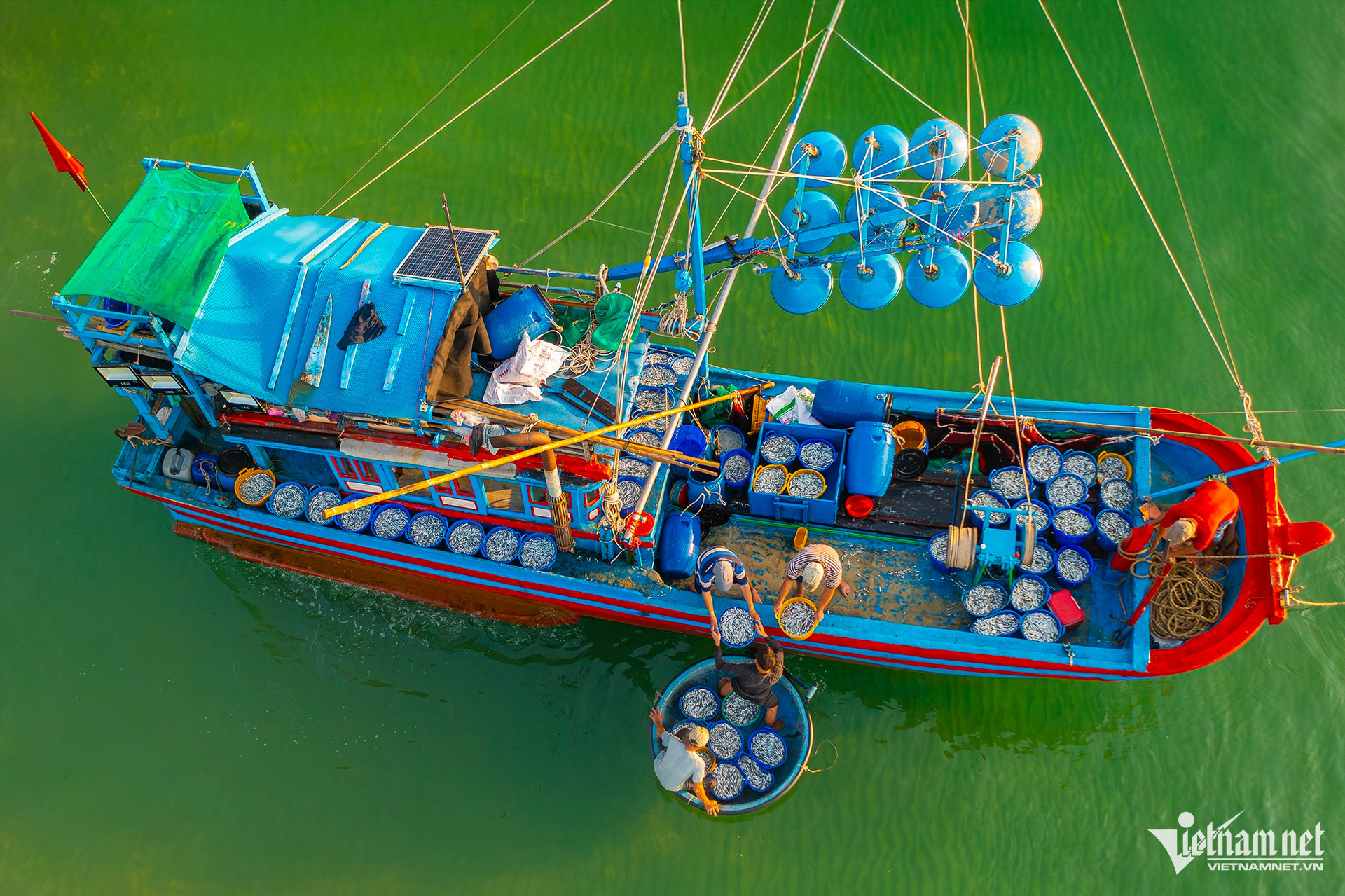
Phu Yen bustles with anchovy season as steaming workshops run at full capacity.
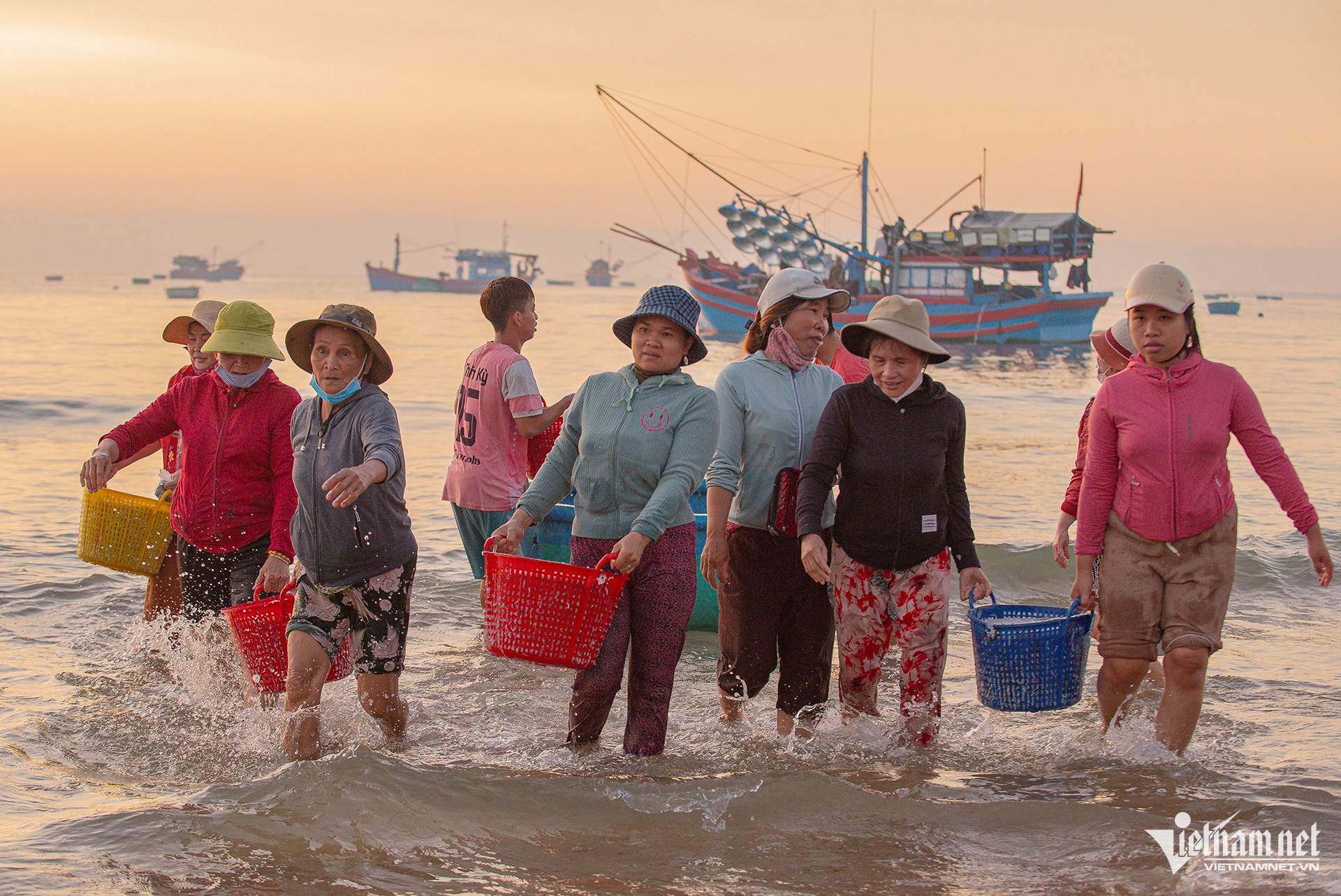
Anchovy baskets are brought ashore at dawn in Nhon Hoi village.
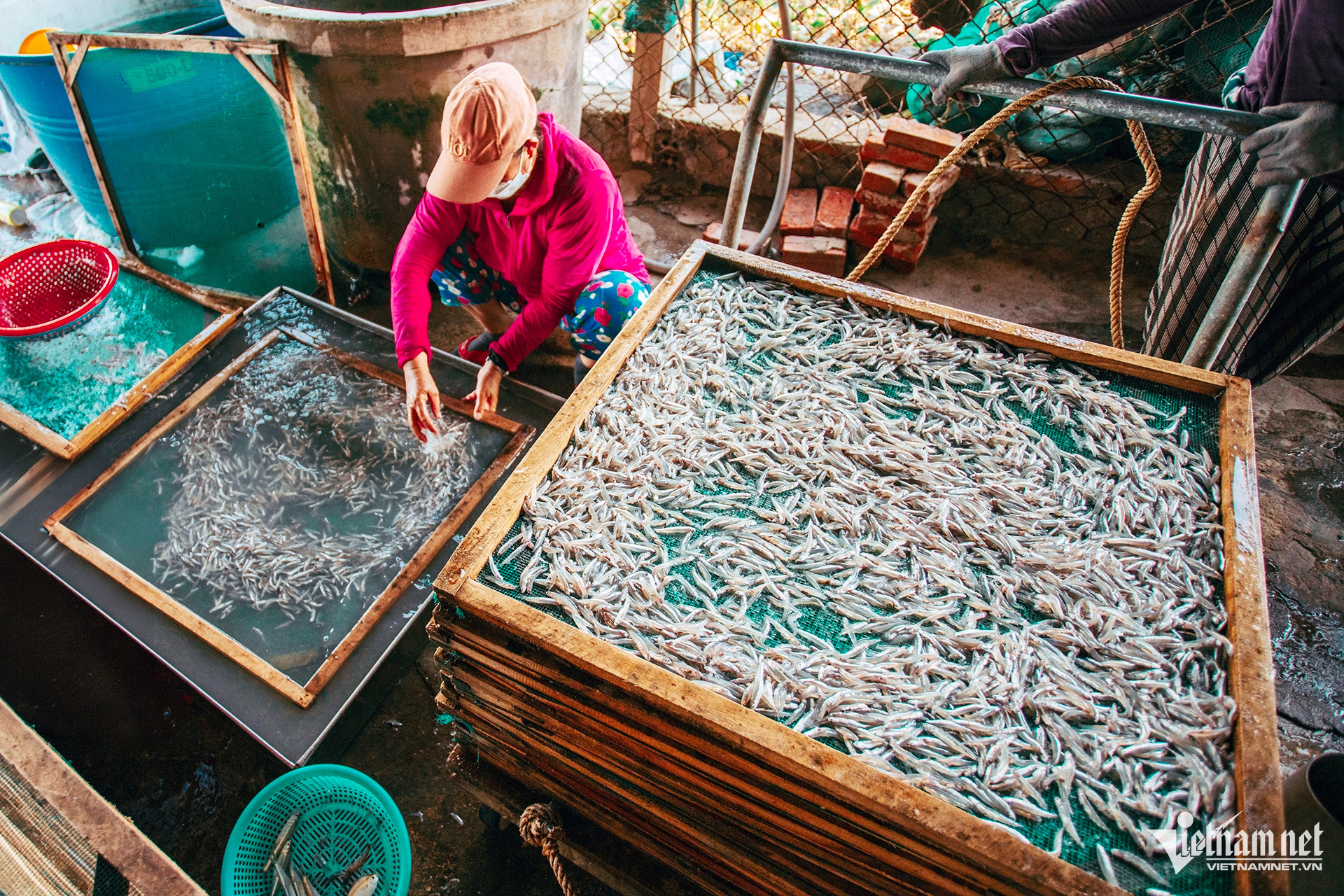
Fresh anchovies are quickly sorted and washed to maintain peak quality.
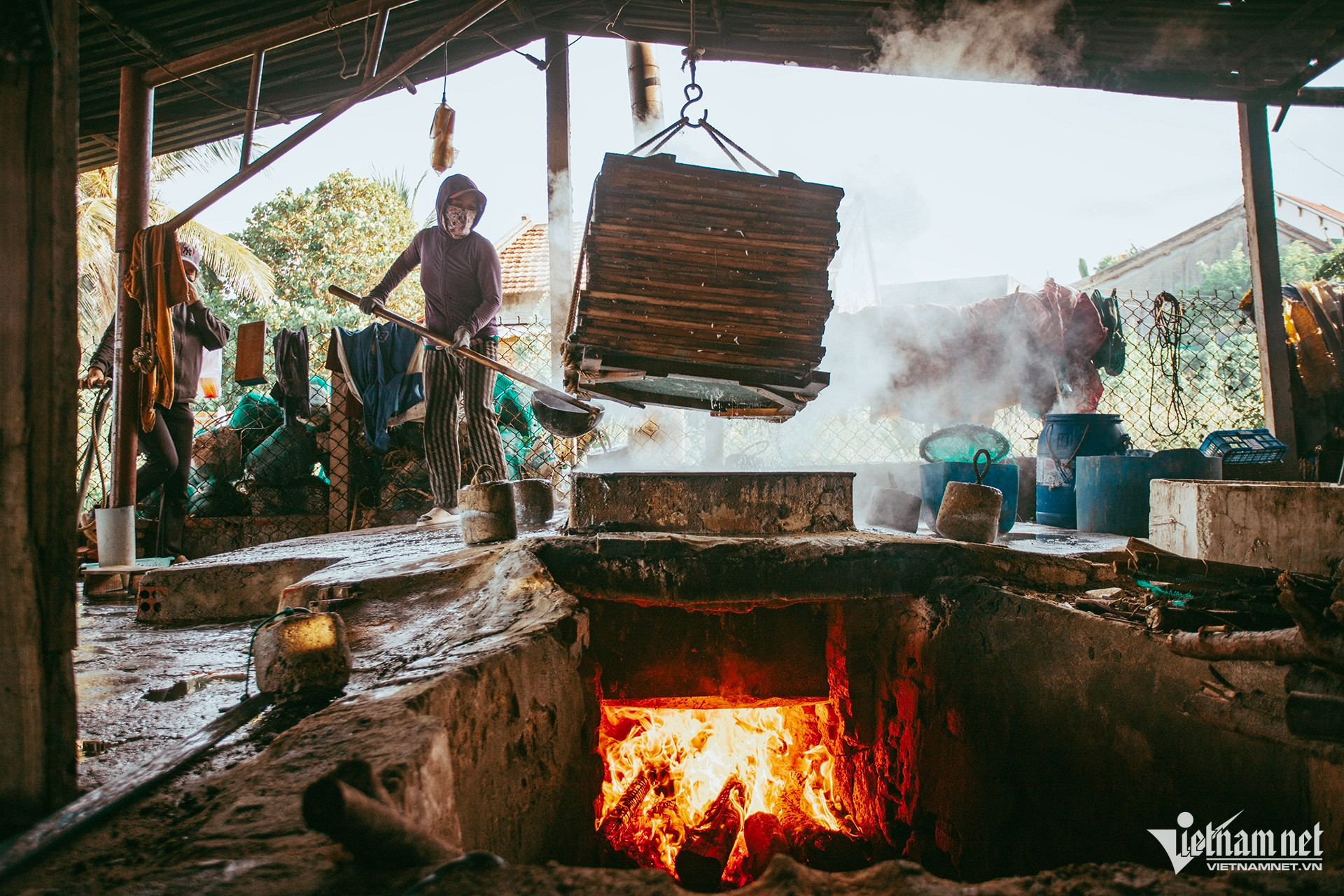
The steaming process demands constant attention to fire and water.
Each steamer processes up to 4 tons daily, yielding high-quality dried fish.
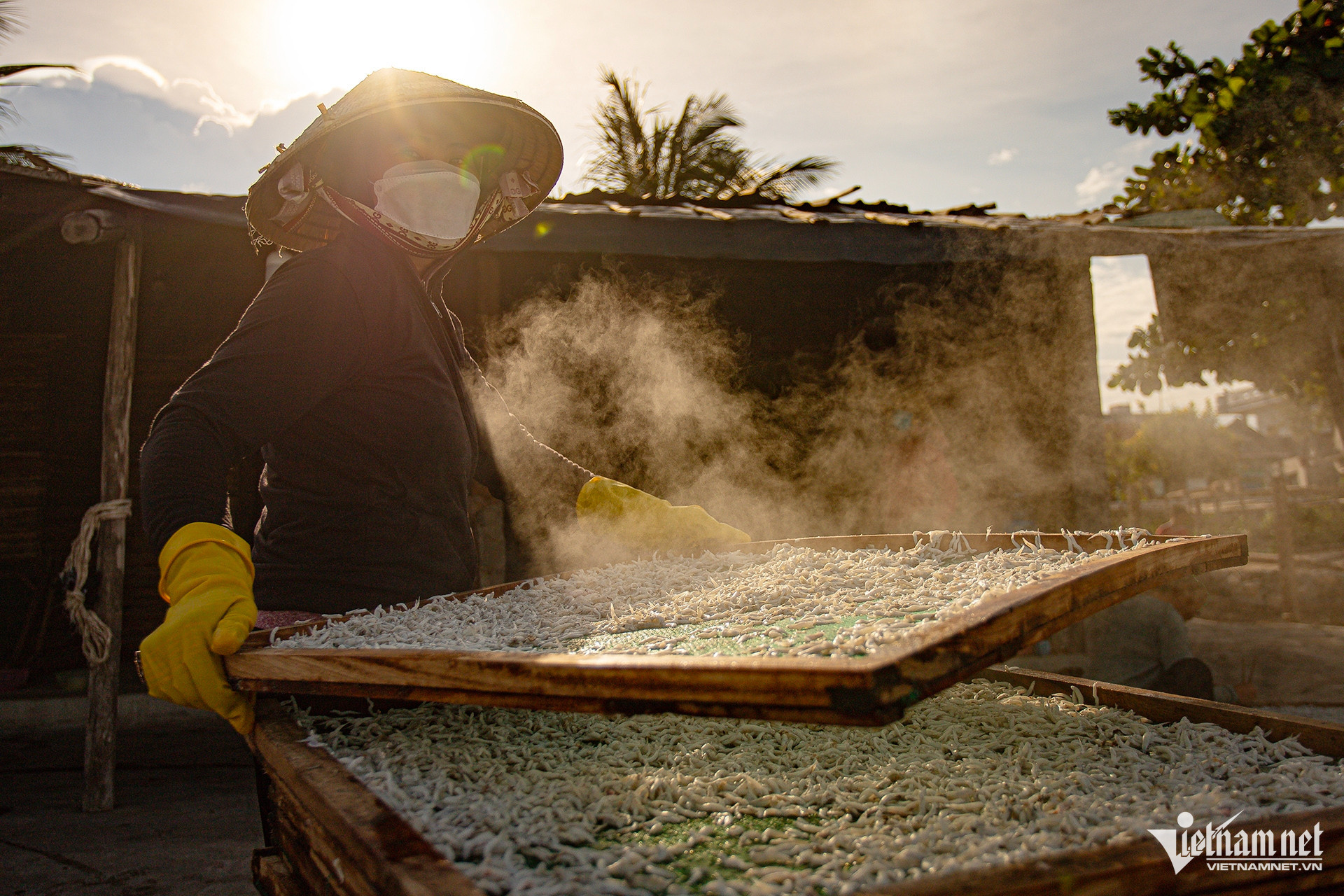
Anchovies are steamed at over 60°C for 5-10 minutes before drying.
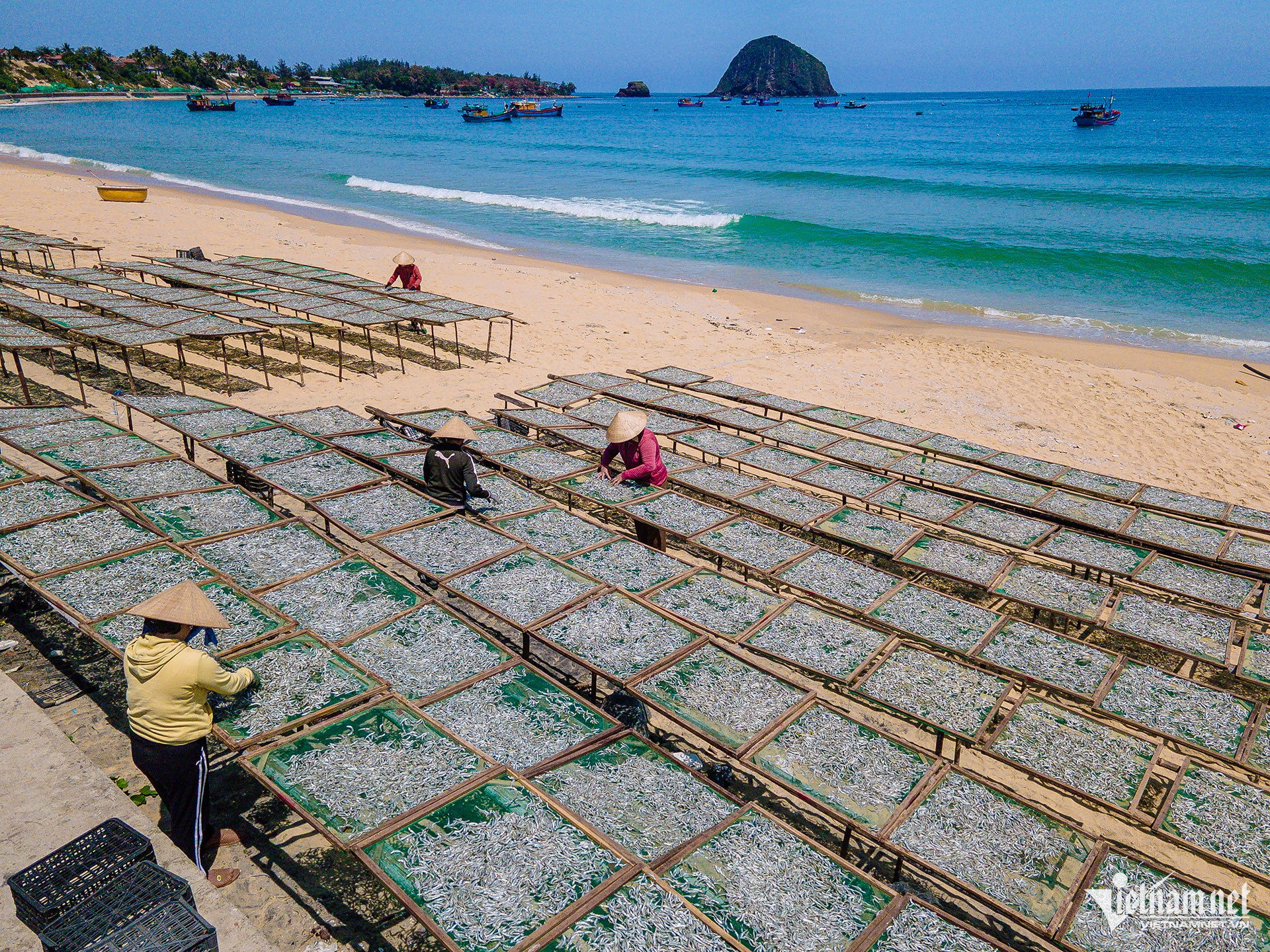
Drying racks line the coast in Nhon Hoi, facing Hon Yen island.
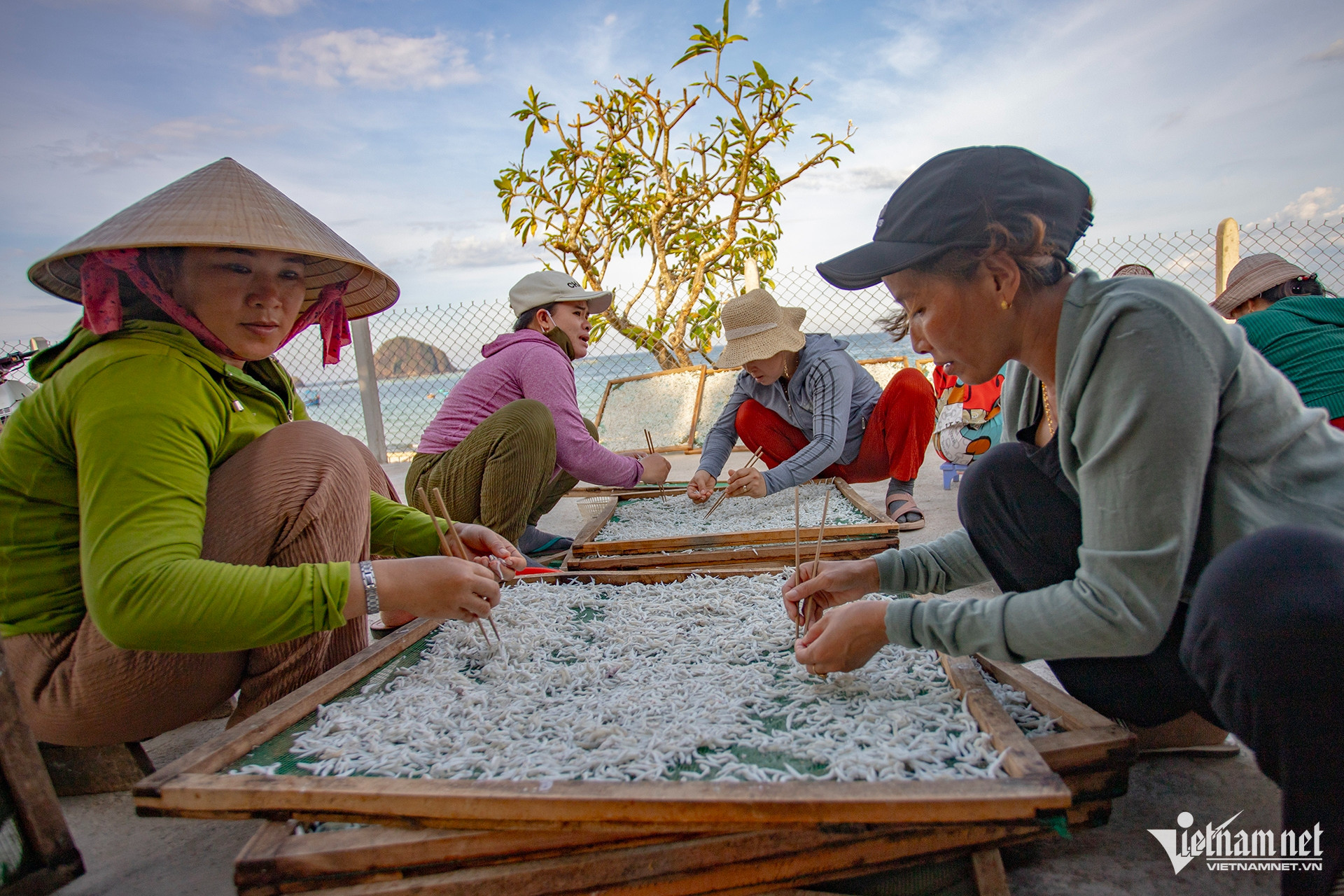
Women take turns flipping fish under the hot sun for even drying.

On sunny days, anchovies dry within a single day.
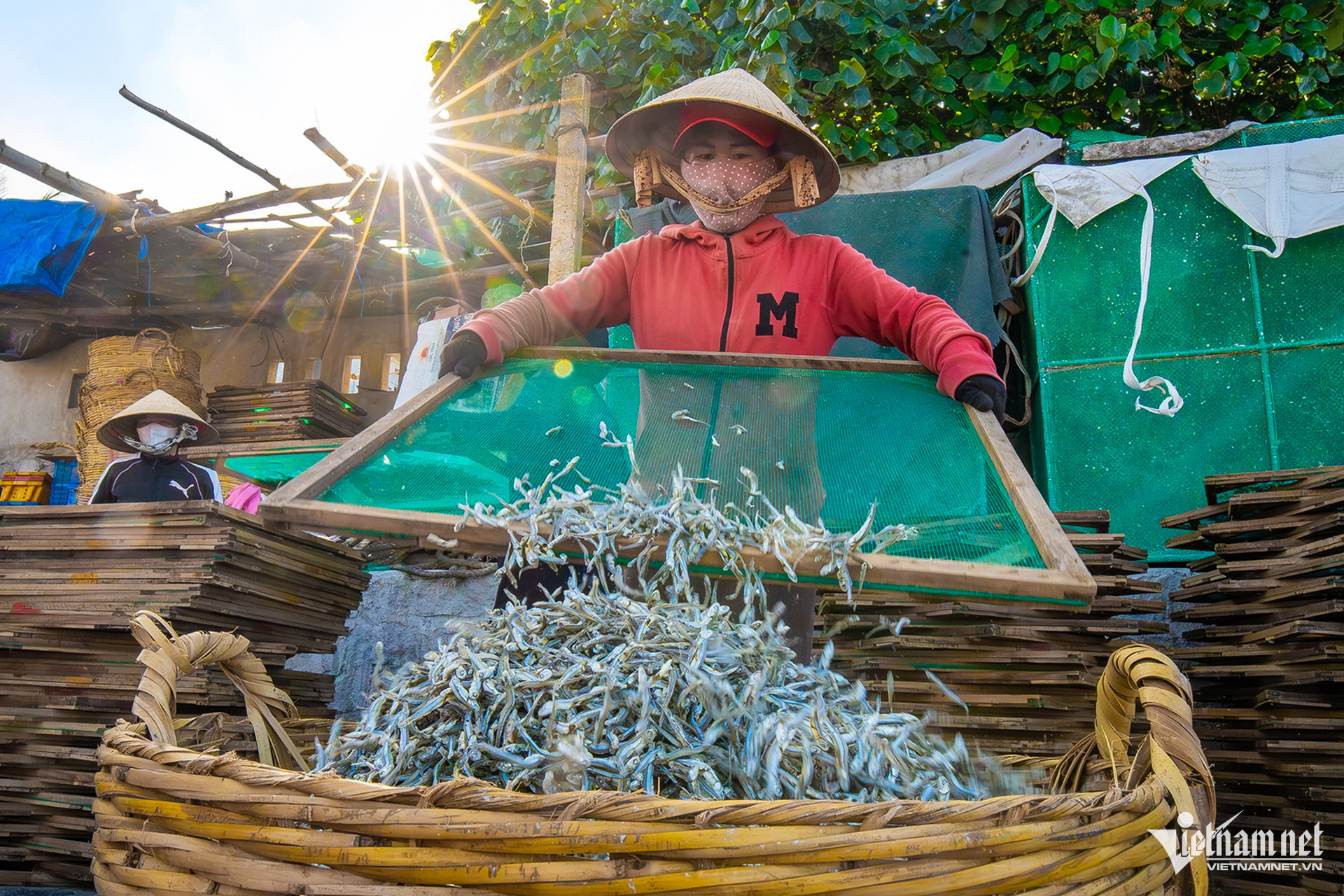
Ngan anchovies are carefully selected and sorted by quality.
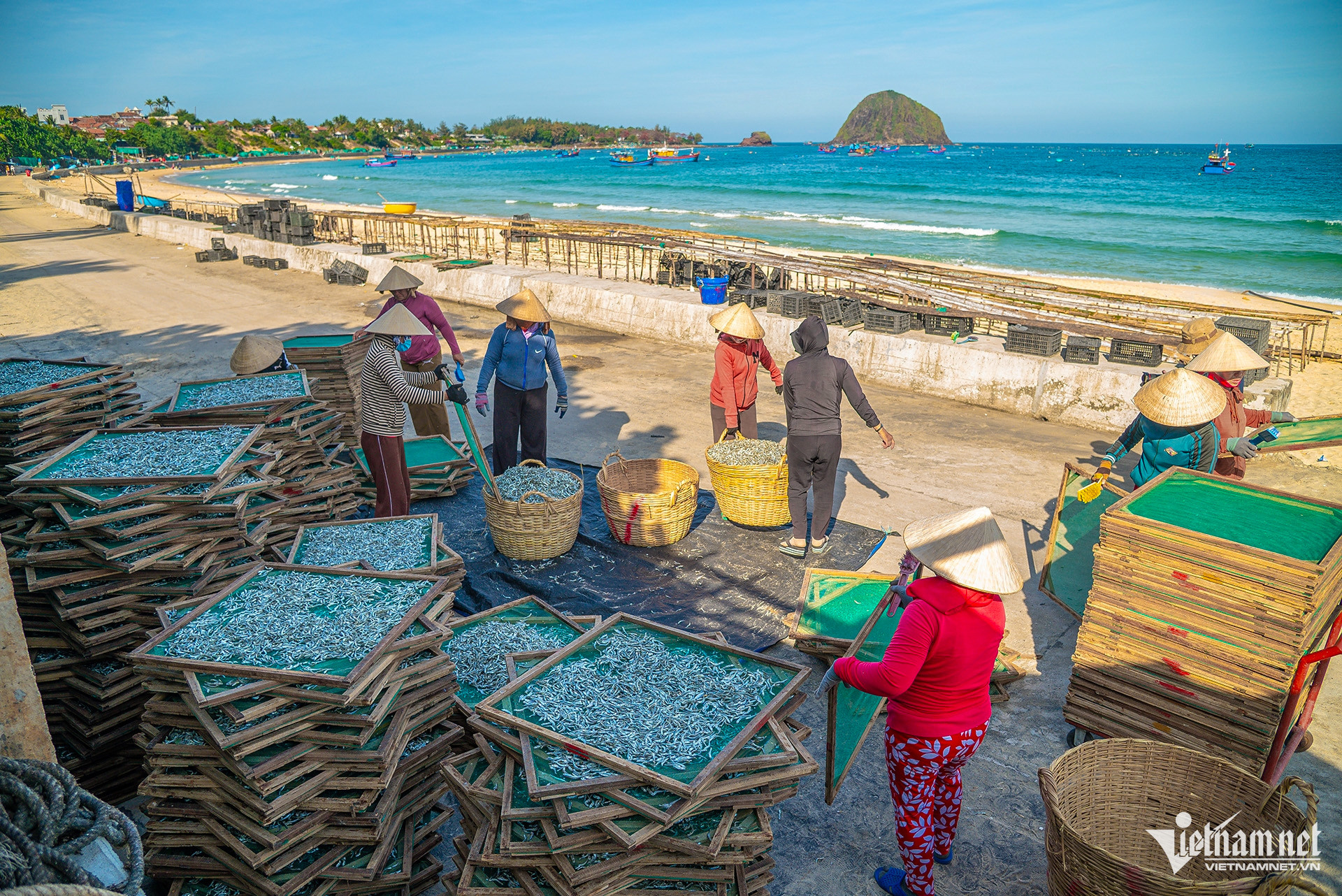
Even in low-yield seasons, steamers operate to support village livelihoods.

Phan Thi My Thi earns by the basket, processing hundreds some days.
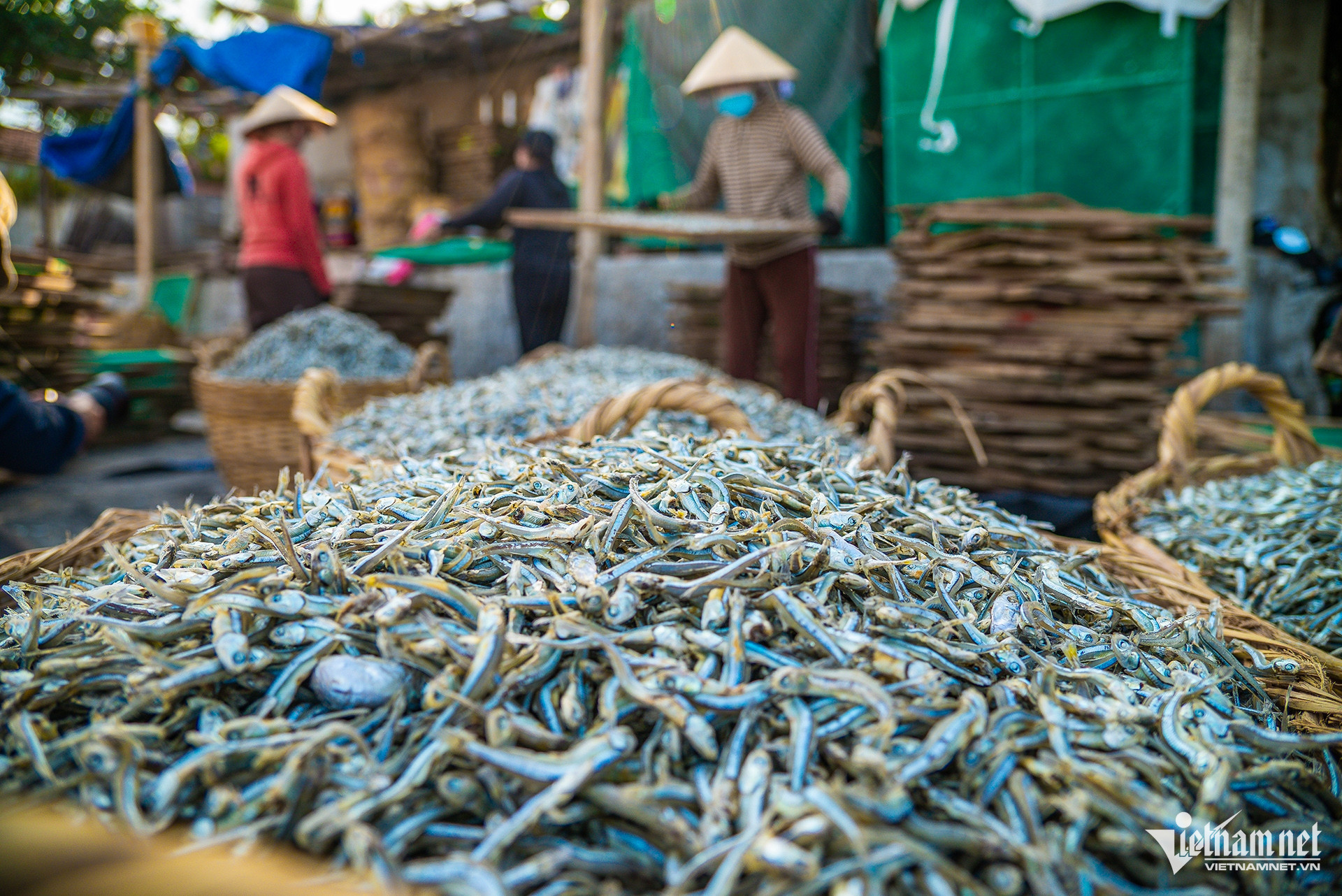
Dinh Huong’s workshop employs about ten local women.
Dried anchovies are a valuable export, reaching markets across Asia and the US.
Thao Quyen